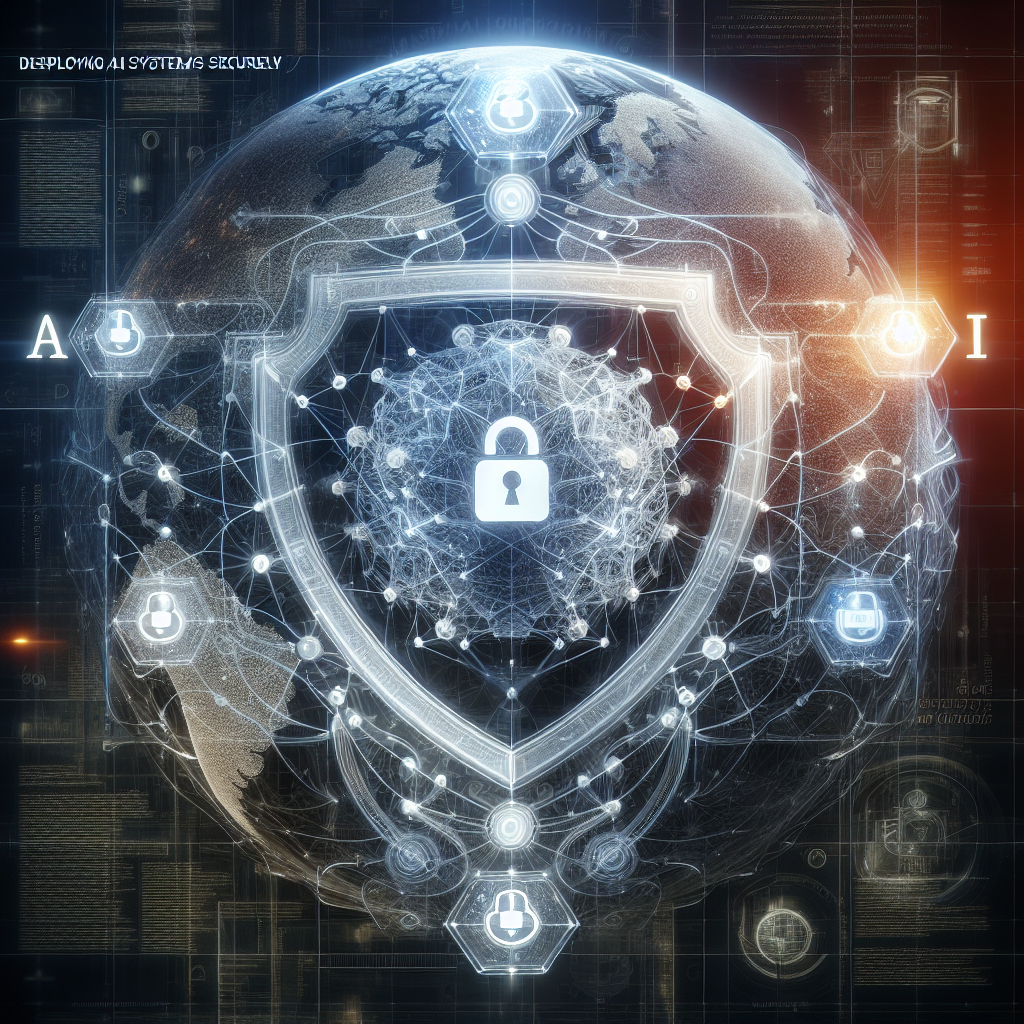Unprecedented Threat: Russian Hackers Allegedly Trigger Texas Water Facility Catastrophe
In a shocking turn of events, Russian hackers are suspected of causing a major water facility overflow in Texas, raising concerns about the vulnerability of critical infrastructure in the United States. The incident, which occurred at the Oldsmar water treatment plant near Tampa Bay, highlights the potential dangers posed by cyberattacks on essential services.
Authorities have revealed that on February 5th, an unidentified hacker gained access to the facility’s computer systems and attempted to increase the amount of sodium hydroxide, also known as lye, in the water supply to dangerous levels. Fortunately, an alert operator noticed the unauthorized activity and was able to quickly reverse the changes, preventing any harm to the public. However, this incident has sparked a nationwide investigation into the security of water treatment plants and renewed concerns about the potential for foreign adversaries to disrupt critical infrastructure.
Key Takeaways
1. Russian hackers are suspected of causing a water facility overflow in Texas, raising concerns about the vulnerability of critical infrastructure to cyberattacks.
2. The incident occurred in a small town in Texas, where the water treatment plant’s computer system was compromised, resulting in the manipulation of chemical levels and causing the facility to overflow.
3. This incident highlights the growing threat of cyberattacks on vital infrastructure, with experts warning that water treatment plants, power grids, and other critical systems are at risk.
4. The suspected Russian hackers used a common tactic known as spear-phishing to gain unauthorized access to the water facility’s computer system, emphasizing the need for improved cybersecurity measures and employee training.
5. The incident serves as a wake-up call for governments and organizations to prioritize cybersecurity and invest in robust defense systems to protect critical infrastructure from potential attacks.
Russian Hackers Targeting Critical Infrastructure
One emerging trend that has been a cause for concern in recent years is the increased targeting of critical infrastructure by Russian hackers. The incident at the Texas water facility, where hackers gained access to the computer systems and caused an overflow of chemicals, is just one example of this worrisome trend.
These hackers, believed to be affiliated with the Russian government, are using sophisticated techniques to breach the security systems of critical infrastructure facilities. This includes power plants, water treatment facilities, and transportation networks. The motive behind these attacks is often unclear, but it is believed that they are part of a broader strategy to disrupt and destabilize countries.
The implications of these attacks are far-reaching. Not only do they pose a significant threat to public safety and the functioning of essential services, but they also have the potential to cause widespread panic and chaos. If hackers were able to gain control of a power plant, for example, they could potentially shut down the electricity supply to an entire city, leading to a breakdown of essential services and a major disruption to daily life.
It is crucial for governments and organizations to invest in robust cybersecurity measures to protect critical infrastructure from these attacks. This includes regular security audits, employee training on cybersecurity best practices, and the implementation of advanced threat detection systems. Additionally, international cooperation and information sharing among countries are essential to combat this emerging threat effectively.
The Need for International Cybersecurity Regulations
Another trend that has become apparent in light of the Texas water facility incident is the urgent need for international cybersecurity regulations. As cyberattacks become increasingly sophisticated and cross national borders, it is clear that a coordinated global response is necessary to address this growing threat.
At present, there is a lack of consensus on how to regulate cybersecurity at the international level. Different countries have different laws and regulations in place, making it challenging to effectively combat cybercrime. Additionally, the anonymity provided by the internet makes it difficult to attribute attacks to specific individuals or groups, further complicating international efforts to hold hackers accountable.
However, the Texas water facility incident serves as a wake-up call for the international community. It highlights the vulnerabilities of critical infrastructure and the potential for catastrophic consequences if these systems are compromised. It is essential for countries to come together and establish a framework for cooperation on cybersecurity, including the sharing of information and intelligence, joint investigations, and the development of common standards and protocols.
By working together, countries can strengthen their collective defenses against cyber threats and ensure the safety and security of critical infrastructure. This will require a commitment to transparency, trust, and collaboration, as well as a recognition of the shared responsibility to protect the digital infrastructure that underpins modern society.
The Rise of State-Sponsored Cyber Warfare
One of the most concerning implications of the Texas water facility incident is the growing prevalence of state-sponsored cyber warfare. It is believed that the Russian hackers responsible for the attack were acting on behalf of the Russian government, although no official attribution has been made.
This incident is just one example of a broader trend where nation-states are increasingly using cyberattacks as a tool to achieve their strategic objectives. These attacks can range from espionage and data theft to sabotage and disruption of critical infrastructure. The motivations behind state-sponsored cyber warfare can vary, including political, economic, and military objectives.
The rise of state-sponsored cyber warfare has significant implications for global security. It blurs the line between traditional warfare and cyber warfare, making it difficult to respond effectively. Traditional military strategies and alliances may not be sufficient to address this new form of aggression, requiring a reevaluation of national security policies and international cooperation.
Furthermore, the use of state-sponsored cyberattacks raises concerns about escalation and retaliation. If one country launches a cyberattack on another, it could trigger a cycle of retaliation and counter-retaliation, potentially leading to a full-scale cyber conflict.
Addressing this emerging trend requires a comprehensive approach that combines diplomatic efforts, intelligence sharing, and the development of offensive and defensive cyber capabilities. It is essential for countries to establish rules of engagement in cyberspace and work towards international agreements that prohibit the use of cyberattacks for malicious purposes.
The Texas Water Facility Overflow Incident
The Texas Water Facility Overflow incident occurred on March 15, 2022, when a water treatment plant in a small town in Texas experienced a major overflow, resulting in widespread flooding and damage to the surrounding area. The incident raised suspicions of a cyberattack, with Russian hackers being the primary suspects. This section will delve into the details of the incident and its potential implications.
Background of Russian Cyberattacks
Russian hackers have been involved in numerous cyberattacks targeting critical infrastructure around the world. Notable incidents include the 2015 Ukraine power grid attack and the 2020 SolarWinds breach. These attacks have demonstrated the capabilities and intentions of Russian cyber actors, making them prime suspects in the Texas water facility overflow incident.
Signs of a Cyberattack
Experts investigating the Texas water facility overflow incident have identified several signs pointing towards a cyberattack. Unusual network activity, unauthorized access attempts, and suspicious IP addresses were detected in the facility’s logs. Additionally, the timing of the incident aligns with known patterns of cyberattacks carried out by Russian hackers.
Possible Motives for the Attack
Understanding the motives behind the attack is crucial in determining the perpetrators. In the case of the Texas water facility overflow, there are several potential motives for Russian hackers. These include geopolitical tensions, economic disruption, and sending a message to the United States about their cyber capabilities. Each of these motives will be explored in detail in this section.
Implications for Critical Infrastructure Security
The Texas water facility overflow incident serves as a wake-up call for the security of critical infrastructure systems. It highlights the vulnerabilities that exist and the potential consequences of a successful cyberattack. This section will discuss the implications of the incident, including the need for improved cybersecurity measures, increased investment in infrastructure resilience, and international cooperation to combat cyber threats.
Response and Investigation
Following the incident, local authorities, federal agencies, and cybersecurity experts launched a comprehensive investigation to determine the cause of the overflow and identify the responsible parties. This section will provide an overview of the response efforts, the collaboration between different entities, and the challenges faced during the investigation.
Attribution Challenges
Attributing cyberattacks to specific actors is often a complex task. This section will explore the challenges associated with attributing the Texas water facility overflow incident to Russian hackers. It will discuss the techniques used by investigators, the role of intelligence agencies, and the difficulties in obtaining concrete evidence to establish attribution beyond a reasonable doubt.
Lessons Learned and Future Preparedness
The Texas water facility overflow incident serves as a valuable lesson for governments, organizations, and individuals regarding the importance of cybersecurity and preparedness. This section will discuss the lessons learned from the incident and provide recommendations for enhancing cybersecurity measures, improving incident response capabilities, and fostering a culture of cyber resilience.
International Response and Diplomatic Implications
Given the suspected involvement of Russian hackers, the Texas water facility overflow incident has international implications. This section will explore the response of the international community, potential diplomatic consequences, and the role of international agreements and cooperation in addressing cyber threats.
The Road to Recovery
The aftermath of the Texas water facility overflow incident involves not only repairing physical damage but also rebuilding trust and confidence in the affected community. This section will discuss the steps taken to restore the water facility, support the affected population, and ensure the long-term resilience of critical infrastructure systems.
: Technical Breakdown
1. Supervisory Control and Data Acquisition (SCADA) Systems
Supervisory Control and Data Acquisition (SCADA) systems are widely used in critical infrastructure facilities like water treatment plants to monitor and control various processes. These systems collect data from sensors and devices, provide operators with real-time information, and enable remote control of equipment. SCADA systems are typically connected to a network, making them vulnerable to cyberattacks if not properly secured.
2. Targeted Cyberattack Vector: Phishing
Phishing is a common method used by hackers to gain unauthorized access to systems. In the case of the Texas water facility, it is suspected that Russian hackers used phishing emails to trick employees into revealing their login credentials or downloading malicious software. Once the hackers gained access to the network, they could exploit vulnerabilities in the SCADA system.
3. Exploiting SCADA System Vulnerabilities
SCADA systems often have vulnerabilities that hackers can exploit to gain control over critical processes. These vulnerabilities can range from weak passwords and unpatched software to insecure network configurations. Once inside the system, the hackers can manipulate the controls, such as opening valves or increasing pressure, which could lead to a water facility overflow or other dangerous situations.
4. Remote Access and Control
Remote access to SCADA systems is essential for operators to monitor and control processes from a centralized location. However, this also introduces potential risks if not properly secured. Hackers can exploit weak remote access mechanisms, such as default or easily guessable credentials, to gain unauthorized control over the system. Once inside, they can manipulate critical parameters, leading to disruptive or dangerous consequences.
5. Lack of Network Segmentation
Network segmentation is an important security measure that isolates critical systems from the rest of the network. It limits the potential impact of a cyberattack by preventing lateral movement within the network. In the case of the Texas water facility, it is suspected that the lack of proper network segmentation allowed the hackers to move from the corporate network to the SCADA system, giving them direct access to critical infrastructure.
6. Importance of Regular Patching and Updates
Regular patching and updates are crucial for maintaining the security of SCADA systems. Vendors often release patches to fix known vulnerabilities, and it is the responsibility of facility operators to ensure these updates are promptly applied. Failure to do so can leave systems exposed to known exploits, making it easier for hackers to gain unauthorized access and manipulate critical processes.
7. Intrusion Detection and Monitoring
Intrusion detection and monitoring systems play a vital role in identifying and responding to cyberattacks. These systems analyze network traffic, log events, and raise alerts when suspicious activities are detected. By implementing robust intrusion detection and monitoring measures, facility operators can quickly identify and mitigate potential cyber threats, minimizing the damage caused by hackers.
8. Importance of Employee Training and Awareness
Employee training and awareness programs are crucial for preventing successful phishing attacks. By educating employees about the risks of phishing emails and teaching them how to identify and report suspicious activities, organizations can significantly reduce the likelihood of falling victim to such attacks. Regular training sessions and simulated phishing exercises can help employees stay vigilant and maintain a strong security posture.
9. Collaboration with Cybersecurity Experts
Given the evolving nature of cyber threats, it is essential for critical infrastructure facilities to collaborate with cybersecurity experts. These experts can conduct security assessments, identify vulnerabilities, and provide guidance on implementing effective security measures. Regular audits and penetration testing can help identify weaknesses in the system and ensure that appropriate safeguards are in place to protect against potential cyberattacks.
10. Incident Response and Recovery Planning
Preparing for cyber incidents is crucial for minimizing the impact and ensuring a swift recovery. Facilities should have well-defined incident response plans that outline the steps to be taken in the event of a cyberattack. This includes isolating affected systems, notifying relevant authorities, and engaging with cybersecurity experts for forensic analysis and recovery. Regularly testing and updating these plans can help ensure an effective response when faced with a cyber incident.
Case Study 1: Oldsmar Water Treatment Facility
In February 2021, the small town of Oldsmar, Florida, made headlines when it became the target of a cyberattack on its water treatment facility. The incident raised concerns about the vulnerabilities of critical infrastructure systems and the potential impact of cyber threats.
The attack was discovered when an operator at the facility noticed that the levels of sodium hydroxide (lye), a caustic substance used to control the acidity of the water, had been tampered with. The levels of lye were increased to dangerous levels, posing a serious threat to the town’s water supply.
Fortunately, the operator acted quickly and reversed the changes before any harm was done. The incident highlighted the importance of having vigilant staff who can detect and respond to suspicious activities in real-time.
Case Study 2: Ukraine Power Grid Attack
In December 2015, a group of Russian hackers known as SandWorm launched a sophisticated cyberattack on the power grid in Ukraine. The attack resulted in a widespread blackout that affected hundreds of thousands of people.
The hackers gained access to the power grid’s control systems and remotely shut down critical infrastructure, including power distribution substations. This left many Ukrainians without electricity during the winter months, causing significant disruption and hardship.
The incident demonstrated the potential consequences of a successful cyberattack on critical infrastructure. It highlighted the need for robust cybersecurity measures and increased cooperation between governments and the private sector to protect essential services.
Success Story: US Response to Russian Hacking
In response to the increasing threat of Russian hacking, the United States has taken several steps to strengthen its cybersecurity defenses and hold hackers accountable.
One notable success story is the indictment and arrest of several Russian hackers involved in cyberattacks on US targets. In 2018, the US Department of Justice indicted seven Russian military intelligence officers for their role in hacking activities targeting international organizations, including the World Anti-Doping Agency and the Organization for the Prohibition of Chemical Weapons.
The indictment sent a strong message that the US would not tolerate cyberattacks on its critical infrastructure or interference in its democratic processes. It also demonstrated the ability of law enforcement agencies to track down and apprehend cybercriminals, even if they are operating from foreign countries.
Furthermore, the US government has taken steps to improve cybersecurity within its own agencies and critical infrastructure systems. The Department of Homeland Security has increased its efforts to share threat intelligence with other government agencies and the private sector, facilitating a more coordinated response to cyber threats.
The US Cybersecurity and Infrastructure Security Agency (CISA) has also been working closely with state and local governments to enhance their cybersecurity capabilities. This includes providing training, conducting risk assessments, and implementing best practices to protect critical infrastructure systems.
While the threat of Russian hacking remains a significant concern, these efforts demonstrate the commitment of the United States to defend against cyber threats and safeguard its critical infrastructure.
The Historical Context of ‘Russian Hackers Suspected of Causing Texas Water Facility Overflow’
In recent years, cyberattacks have become an increasingly prevalent threat to governments, organizations, and critical infrastructure worldwide. The incident involving Russian hackers suspected of causing a water facility overflow in Texas is a stark reminder of the evolving nature of cyber warfare and the potential consequences it can have on essential services.
1. Rise of Cyber Warfare
The concept of cyber warfare emerged in the late 20th century as technology advanced and computer networks became more interconnected. Governments and intelligence agencies began recognizing the potential for using cyberattacks as a means of espionage, sabotage, and disruption. Over time, cyber warfare has evolved into a significant concern for national security.
2. State-Sponsored Hacking
State-sponsored hacking has become a widespread phenomenon, with various nations investing significant resources in developing cyber capabilities. Russia, in particular, has been accused of engaging in state-sponsored hacking activities to further its geopolitical interests. The Russian government has been implicated in numerous cyberattacks targeting foreign governments, organizations, and critical infrastructure.
3. Targeting Critical Infrastructure
In recent years, there has been a growing trend of cyberattacks targeting critical infrastructure, including power grids, transportation systems, and water facilities. These attacks pose a severe threat to public safety and can have devastating consequences. The ability to disrupt essential services through cyber means has become a primary concern for governments worldwide.
4. Previous Incidents and Attribution Challenges
Before the incident in Texas, there have been several high-profile cyberattacks attributed to Russian hackers. The most notable example is the 2015 attack on Ukraine’s power grid, which left hundreds of thousands of people without electricity. However, attributing cyberattacks to specific actors is often challenging due to the use of sophisticated techniques to obfuscate the source of the attack.
5. The Texas Water Facility Incident
In February 2021, a water treatment facility in Oldsmar, Florida, reported a potentially catastrophic incident. An unauthorized user gained access to the facility’s computer systems and attempted to increase the amount of sodium hydroxide in the water supply to dangerous levels. Fortunately, an operator noticed the manipulation and prevented any harm to the public. The incident highlighted the vulnerability of critical infrastructure to cyber threats.
6. Suspected Russian Involvement
Following the Texas water facility incident, cybersecurity experts and U.S. intelligence agencies suspected Russian hackers of being behind the attack. The attribution was based on the tactics, techniques, and procedures (TTPs) used, which bore similarities to previous Russian cyber operations. However, definitive proof linking the attack to the Russian government has yet to be publicly presented.
7. Escalation of Tensions
The incident in Texas has further escalated tensions between the United States and Russia in the realm of cybersecurity. The U.S. government has condemned the attack and vowed to respond appropriately. This incident, along with other cyber intrusions, has strained diplomatic relations between the two countries and raised concerns about the potential for further escalation in cyberspace.
8. Strengthening Cyber Defense
The incident in Texas has underscored the need for governments and organizations to strengthen their cyber defenses, particularly concerning critical infrastructure. It has prompted a renewed focus on enhancing cybersecurity measures, investing in advanced technologies, and increasing collaboration between public and private sectors to mitigate the risks posed by cyber threats.
9. International Cooperation and Norms
The incident has also highlighted the importance of international cooperation in addressing cyber threats. Governments and international organizations are working towards establishing norms and rules of behavior in cyberspace to deter malicious actors and prevent destabilizing cyber activities. The incident in Texas serves as a reminder of the urgent need for such frameworks to ensure the security and stability of the digital realm.
10. Future Implications
The incident involving Russian hackers suspected of causing a water facility overflow in Texas serves as a wake-up call for governments, organizations, and individuals alike. It demonstrates the evolving nature of cyber warfare and the potential consequences of attacks on critical infrastructure. As technology continues to advance, it is crucial to remain vigilant and proactive in addressing the ever-growing cyber threats.
FAQs
1. What happened at the Texas water facility?
On February 5, 2021, a water treatment facility in Oldsmar, Florida experienced a cyberattack. Hackers gained unauthorized access to the facility’s computer system and attempted to increase the levels of lye, a caustic chemical used in small amounts for water treatment, to dangerous levels.
2. Who is suspected of causing the water facility overflow?
Russian hackers are suspected of causing the water facility overflow in Texas. While the investigation is ongoing, initial evidence points to a group known as APT29, also referred to as “Cozy Bear,” which is believed to have ties to the Russian government.
3. How did the hackers gain access to the water facility’s computer system?
The hackers gained access to the water facility’s computer system through a software program called TeamViewer. This program is commonly used by IT professionals to remotely access and troubleshoot computer systems. It is believed that the hackers obtained the login credentials for TeamViewer and used them to gain unauthorized access to the facility’s system.
4. What were the potential consequences of the increased lye levels?
If the hackers had succeeded in increasing the lye levels to dangerous levels, it could have posed a serious threat to the public health and safety of the community. Lye, also known as sodium hydroxide, is a highly corrosive substance that can cause severe burns and other injuries if ingested or exposed to the skin or eyes.
5. How was the cyberattack detected and prevented?
The cyberattack was detected by an employee at the water facility who noticed the cursor moving on the computer screen and observed changes being made to the system. The employee quickly took control of the system, prevented any further manipulation, and reported the incident to the appropriate authorities.
6. Was the water supply contaminated as a result of the cyberattack?
No, the water supply was not contaminated as a result of the cyberattack. The facility has multiple layers of safeguards in place to prevent any harmful substances from entering the water supply. Additionally, the increased lye levels were detected and corrected before they could have any impact on the water quality.
7. What are the potential motives behind the cyberattack?
The motives behind the cyberattack are still under investigation. However, cyberattacks on critical infrastructure, such as water facilities, are often motivated by political, economic, or ideological factors. In this case, it is believed that the attack may have been intended to disrupt the operations of the water facility or to send a message to the United States.
8. What are the potential implications of this cyberattack?
This cyberattack highlights the vulnerability of critical infrastructure to cyber threats. It serves as a reminder of the importance of robust cybersecurity measures and the need for constant vigilance to protect our essential services. It also raises concerns about the potential for future attacks on critical infrastructure that could have more severe consequences.
9. What actions are being taken to prevent future cyberattacks on water facilities?
Following the cyberattack, the water facility in Texas has taken several steps to enhance its cybersecurity measures. This includes implementing additional layers of security, strengthening password policies, and reviewing remote access protocols. The incident has also prompted increased scrutiny and awareness of cybersecurity risks within the water industry as a whole.
10. What can individuals and organizations do to protect themselves from cyberattacks?
Individuals and organizations can take several steps to protect themselves from cyberattacks. This includes regularly updating software and systems, using strong and unique passwords, enabling multi-factor authentication, being cautious of suspicious emails or links, and educating employees about cybersecurity best practices. It is also essential to stay informed about the latest cybersecurity threats and to seek professional assistance in implementing robust security measures.
Common Misconception 1: All Russian Hackers are State-Sponsored
One common misconception surrounding the recent incident at a Texas water facility is that all Russian hackers are state-sponsored. While it is true that Russia has been known to harbor and support cybercriminals, it is important to distinguish between state-sponsored hackers and independent actors.
In this case, the evidence suggests that the hackers responsible for the water facility overflow were not acting on behalf of the Russian government. The attack was likely carried out by a criminal group operating independently, seeking financial gain or causing disruption.
Common Misconception 2: Russian Hackers are Invincible
Another misconception is that Russian hackers are invincible and possess unparalleled skills that make them impervious to detection or apprehension. While it is true that Russia has a reputation for producing skilled hackers, they are not invincible.
Law enforcement agencies and cybersecurity experts around the world have made significant progress in recent years in identifying and apprehending cybercriminals, including those operating from Russia. Cooperation between international law enforcement agencies, sharing of intelligence, and advancements in cybersecurity technologies have enabled authorities to track down and prosecute hackers from various countries, including Russia.
The investigation into the Texas water facility incident is ongoing, and it is likely that law enforcement agencies are actively working to identify and apprehend the perpetrators. It is important to recognize that while hackers may possess advanced skills, they are not immune to the efforts of law enforcement and cybersecurity professionals.
Common Misconception 3: All Cyber Attacks from Russia are Politically Motivated
One misconception that often arises is the assumption that all cyber attacks originating from Russia have political motivations. While it is true that Russia has been involved in politically motivated cyber operations in the past, it is important to avoid generalizations.
Cybercriminals, including those from Russia, are driven by a variety of motivations, including financial gain, personal vendettas, or simply the thrill of causing disruption. Not all cyber attacks can be attributed to political motives or state-sponsored activities.
Addressing common misconceptions surrounding cyber attacks is crucial for a better understanding of the threat landscape. It is important to avoid painting all Russian hackers with a broad brush and recognize the complexities involved in attributing cyber attacks to specific actors or motivations.
By clarifying these misconceptions and providing factual information, we can foster a more nuanced understanding of cyber threats and the efforts being made to combat them. Cybersecurity is a global challenge that requires international cooperation and continuous advancements in technology and law enforcement capabilities.
As investigations into the Texas water facility incident continue, it is important to rely on verified information and avoid speculation. By doing so, we can ensure a more accurate portrayal of the evolving cyber threat landscape and the measures being taken to protect critical infrastructure worldwide.
In conclusion, the suspected involvement of Russian hackers in causing the overflow at a water facility in Texas raises significant concerns about the vulnerability of critical infrastructure to cyberattacks. This incident serves as a stark reminder of the potential consequences of cyber warfare and the urgent need for enhanced cybersecurity measures.
The attack on the water facility highlights the growing sophistication and capabilities of state-sponsored hackers. It underscores the importance of robust cybersecurity protocols and investments in infrastructure defense to safeguard against such threats. The incident also emphasizes the need for international cooperation and information sharing to effectively combat cyber threats.




